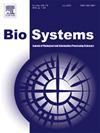Nuclear quantum effects explain chemiosmosis: The power of the proton
IF 2
4区 生物学
Q2 BIOLOGY
引用次数: 0
Abstract
ATP is a universal bio-currency, with chemiosmosis the metabolic mint by which currency is printed. Chemiosmosis leverages a membrane potential and ion gradient, typically a proton gradient, to generate ATP. The current chemiosmotic hypothesis is both cannon and dogma. However, there are obstacles to the unqualified and uncritical acceptance of this model. Intriguingly the proton is sufficiently small to exhibit quantum phenomena of wave-particle duality, often thought the exclusive prerogative of smaller subcellular particles. Evidence shows that chemiosmosis is by necessity critically dependent upon these nuclear quantum effects (NQE) of hydrogen, most notably as a proton. It is well established scientific orthodoxy that protons in water and hydrogen atoms of water molecules exhibit quantum phenomena. The effect is amplified by the hydrogen bonding and juxta-membrane location of protons in mitochondria and chloroplasts. NQE explains the otherwise inexplicable features of chemiosmosis, including the paucity of protons, the rate of proton movement and ATP genesis in otherwise subliminal proton motive forces and thus functionality of alkaliphiles. It also accounts for the efficiencies of chemiosmosis reported at greater than 100% in certain contexts, which violates the second law of thermodynamics under the paradigm of classical physics.
Mitochondria may have evolved to exploit quantum biology with notable features such as dimeric ATP synthases adumbrating the first double-slip experiment with the protons. The dramatic global deceleration of mitochondrial chemiosmosis and all cellular function following proton substitution with its heavier isotopes, deuterium and tritium: “deuteruction”, is testimony to the primacy of nuclear quantum effects in this Quantum Chemiosmosis. Indeed the speed of evolution itself and its inexorable route to homeothermy may be due to the power of nuclear quantum effects of the smallest nucleus, the proton. The atom that is almost nothing was selected to bring about the most important processes and complex manifestations of life.
核量子效应解释化学渗透:质子的力量。
ATP是一种通用的生物货币,具有化学渗透作用,是印刷货币的代谢薄荷。化学渗透利用膜电位和离子梯度(通常是质子梯度)来产生ATP。目前的化学渗透假说既是大炮又是教条。然而,对这种模式的无条件和不加批判的接受存在障碍。有趣的是,质子足够小,可以表现出波粒二象性的量子现象,这种现象通常被认为是较小的亚细胞粒子所独有的。有证据表明,化学渗透必然严重依赖于氢的这些核量子效应(NQE),尤其是作为质子的氢。水分子中的质子和水分子中的氢原子表现出量子现象,这是科学界公认的正统观点。线粒体和叶绿体中质子的氢键和近膜位置放大了这种效应。NQE解释了化学渗透的其他难以解释的特征,包括质子的缺乏,质子运动的速度和ATP的产生,否则是潜意识的质子动力,因此是亲碱生物的功能。它还解释了在某些情况下化学渗透的效率大于100%,这违反了经典物理范式下的热力学第二定律。线粒体可能已经进化到利用量子生物学的显著特征,如二聚体ATP合成酶,预示着质子的第一次双滑移实验。在质子被较重的同位素氘和氚取代后,线粒体化学渗透和所有细胞功能在全球范围内急剧减速:“氘化”,证明了核量子效应在量子化学渗透中的首要地位。事实上,进化本身的速度及其不可阻挡的恒温路线可能是由于最小的原子核质子的核量子效应的力量。那个几乎什么都不是的原子被选中,产生了生命中最重要的过程和最复杂的表现。
本文章由计算机程序翻译,如有差异,请以英文原文为准。
求助全文
约1分钟内获得全文
求助全文
来源期刊

Biosystems
生物-生物学
CiteScore
3.70
自引率
18.80%
发文量
129
审稿时长
34 days
期刊介绍:
BioSystems encourages experimental, computational, and theoretical articles that link biology, evolutionary thinking, and the information processing sciences. The link areas form a circle that encompasses the fundamental nature of biological information processing, computational modeling of complex biological systems, evolutionary models of computation, the application of biological principles to the design of novel computing systems, and the use of biomolecular materials to synthesize artificial systems that capture essential principles of natural biological information processing.
 求助内容:
求助内容: 应助结果提醒方式:
应助结果提醒方式:


